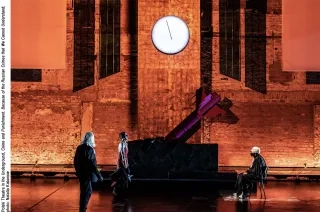Tango as Memory Machine
The article looks at the history of Argentine tango in Poland using the tools of song studies and memory studies. The author makes reference to Marvin Carlson’s concept and treats tango as a memory machine; in her opinion, pre-war Polish tango allows to tell an important fragment of the history of Poland and Central Europe. Focusing on selected songs, she shows how their history (and the fates of their creators) is entangled in various cultural, social and political contexts. The author constructs the narrative by choosing one tango, Plegaria by the Argentinian musician Eduardo Bianco, which was chosen for his debut at the Qui Pro Quo theatre by the Dana Choir. According to a legend, this tango was to be the ‘tango of death’ from the Janowska concentration camp, the inspiration for Paul Celan’s Todesfuge (Death Fugue). Other Polish songs of the time are also recalled (e.g. the tango Wanda, alluding to the activities of the Zwi Migdal organisation, the foxtrot Gdy Petersburski razem z Goldem gra (When Petersburski and Gold Play Together), or the Polish version of La Cumparsita with lyrics by Andrzej Włast) and their composers (Jerzy Petersburski, the brothers Artur and Henryk Gold, Henryk Wars and Dawid Bajgelman), lyricists (Andrzej Włast and Emanuel Schlechter) and performers (Mieczysław Fogg, Adam Aston and Wiera Gran). Many tango artists in Poland had Jewish roots and perished during the war, which means that the genre itself became entangled here in the history of the Holocaust.
Keywords: Argentine Tango in Poland; tango of death; entertainment theatre; song studies; memory machine
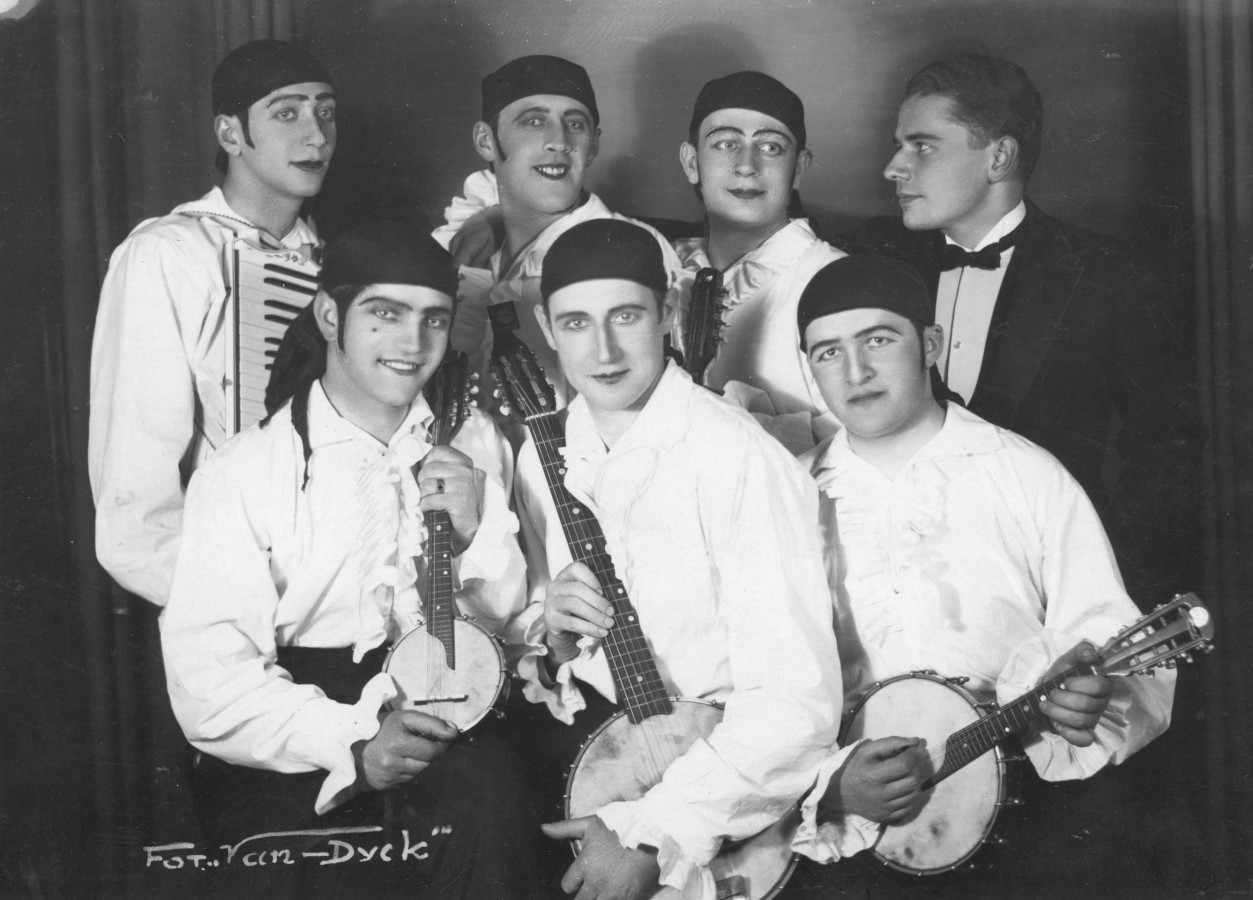
Chór Dana; photo: National Digital Archive
1.
A memory machine? This is how Marvin Carlson has made us think of the theatre. His 2001 book, The Haunted Stage: The Theatre as Memory Machine (Carlson, 2003),1 addresses the relationship between theatre and memory. For Carlson, the essence of the theatrical experience is the oscillation between the ‘here and now’ of the theatre and the ‘there and then’ of the represented world, but also the multiple ‘there and then’ of the spectator’s past theatrical experiences. His/her perception activates the memory of all previously seen productions of Shakespeare and Ibsen, all of the actress’s/actor’s previous roles, which haunt the stage and the audience’s imagination like ghosts. The American scholar believes this to be the reason why there are so many ghosts, apparitions and spectral figures in theatre. The Phantom of the Opera, Hamlet and Ibsen’s Ghosts thematize and recycle the essence of theatre art. Hence the title of his book: The Haunted Stage. This mechanism of recognition is also a source of the spectator’s pleasure, and many directors deliberately utilize this effect, constructing their theatrical idiom from quotations and self-quoatation (the case of Jerzy Grzegorzewski).
Songs, as demonstrated by practitioners of song studies, a relatively new branch of the humanities which explores popular music,2 affect us in a similar way (Tański, 2021; Kuligowski, Tański, 2021). For example, our enjoyment of a cover (another version of a hit song) consists in recognizing a new rendition of the original or one of its previous incarnations. Incidentally, the more radically different the new version is, the greater the fun for the listener (Skrzypek, 2021).
Marek Jeziński proposes an understanding of popular music (an important part of 20th-century audiosphere) as Pierre Nora’s site of memory.
Music, a form of cultural memory, should be understood as a sonic space reflecting the current landscape of society – musical styles, methods of music production, and the works and performers popular at a given time are important indicators of wider trends and cultural changes in society (Jeziński, 2017, p. 15).
Popular music as a site of memory combines the most personal (think how often our memories are encoded by their soundtrack) with the public. Music reaches us through multiple channels operated by various public institutions (concert halls and dance floors, radio and television, the recording industry and, in the past, sheet music publications, now superseded by the Internet with YouTube, Spotify and other music portals), as much shaped by the period’s fashion and ambience as that fashion and ambience and the audience’s preferences are shaped by them. Engaged in a dynamic dialogue that John Fiske describes as the constant negotiations and guerrilla struggle between ‘domination and subordination’ (2010, p. 19), between power and forms of public resistance, between military strategy (of the culture industry in this case) and audiences’ guerrilla tactics. According to Pierre Nora, a site of memory can be ‘any significant entity, whether material or non-material in nature, which by dint of human will or the work of time has become a symbolic element of the memorial heritage of any community’ (Nora, 1996, p. XVII). Consequently, it can also be a song.
![La Cumparsita – plate’s label, Odeon, series N (Wo2145), source: staremelodie.pl [collection: 240252] La Cumparsita – plate’s label, Odeon, series N (Wo2145), source: staremelodie.pl [collection: 240252]](/sites/default/files/styles/article_max/public/content/images/175_chalupnik_2.jpg?itok=QEIYUiAd)
La Cumparsita – plate’s label, Odeon, series N (Wo2145), source: staremelodie.pl [collection: 240252]
2.
So how would I like to think in this paper about song and its special genre that is the Polish variety of tango? Would it be a ‘site’ or a ‘machine’? ‘Site’ seems to connote a more static vision, ‘machine’ refers to the dynamics of collective memory and its performative character and thus appears to a more appropriate category for my subject. I am interested in the dynamic and circular character of the migration of rhythms, melodies and dance steps from Europe overseas and back – from Argentina to Europe and Poland, and all the contexts acquired by tango during those travels, all the cultural residue that it carries. Tango as a memory machine establishes new relationships and generates new meanings which I am going to trace. (And since theatre is my starting point, I will regularly return to theatre).
Many songs thematize their function as a medium of memory, whether we define them as sites or machines. Recall, for example, Już nie zapomnisz mnie (You Will Not Forget Me) with music by Henryk Wars and lyrics by Ludwik Starski from the 1938 film Zapomniana melodia (Forgotten Melody):
Because you won’t forget me
When you remember my song
The melody has magic powers
And charm, and mightAnd even if you forget me
The wistful sound of this tune
Will make you miss me for sure
Every day and night.3
I was going to refer here to one of Osvaldo Pugliese’s most beautiful and recognizable tangos, Recuerdo,4 with lyrics by Eduardo Moreno, which must be the title that first comes to the mind of every aficionado when asked about tango and memory. When I looked for its lyrics at todotango.com, a list of twenty-eight tango pieces containing the word ‘recuerdo’ in the title was displayed, and it is by no means a complete inventory5. I don’t know all of them, but the list is very promising. (Recuerdo can be translated as ‘I remember,’ ‘memory,’ ‘reminiscence’ and ‘souvenir;’ all of these meanings revolve around memory and remembering.) Judging by the titles alone, their authors write and sing about the aromas and colours of memories (Perfumes del recuerdo, Flor de recuerdo), recall old loves, girlfriends (Un recuerdo de amor, Muchachita del recuerdo) and places (Recuerdo de Bahia, Cafecito del recuerdo), and pay homage to the past maestros (Memorial/Recuerdo de tangos, Recuerdo para Villoldo). Perhaps, then, it is pointless to refer to that particular text, since Argentine tango as a genre is, in a sense, about memory and remembering? About nostalgia for a lost homeland that you’ve never really had? (Thomson, 2005)
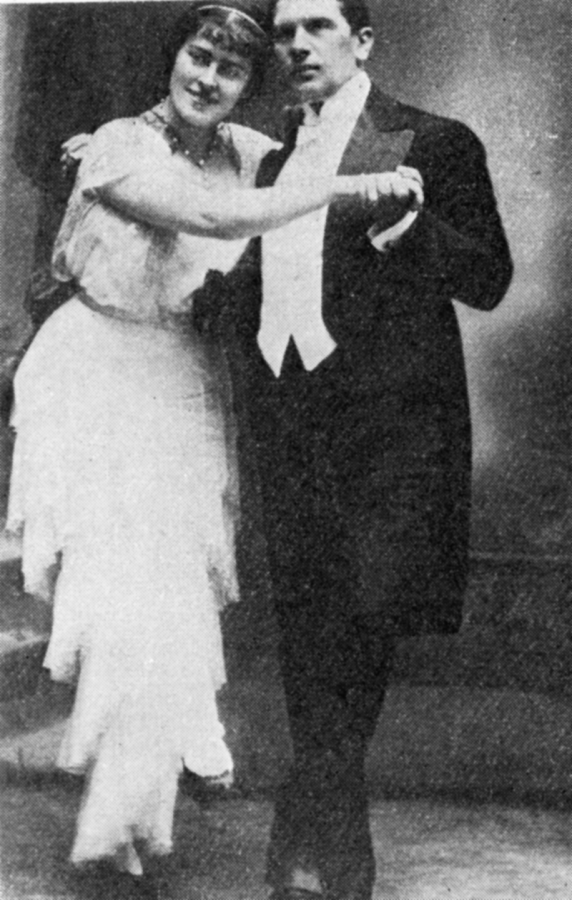
Lucyna Messal and Józef Redo in The Marriage Market; photo: Malarski and Tavrell, Varsovie
I also have the impression that Carlson’s haunting effect must have accompanied the participants in the tango life of Buenos Aires during the most hectic years in the history of the genre: the most popular tangos were recorded by the majority of popular orchestras so for porteños (residents of Buenos Aires) they exist simultaneously in many versions. The most famous tango, the closure of every milonga (a tango dance party), La Cumparsita by Gerardo Matos Rodríguez from 1916, has allegedly been recorded 2700 times! Today YouTube puts those thousands of versions at our fingertips so we can easily trace the history of recordings and its meanderings.6 This availability changes the way we experience music, but it can also give a false image of the scope of musical influence in the past: to travel, music used to need the body and memory of a living person or a material carrier, such as a record or a score. Nevertheless, La Cumparsita must have been familiar to every porteño in many instrumental or vocal versions (with words by the composer or as Si supieras with lyrics by Pascual Contursi and Enrique Pedro Maroni). Thus when he or she heard one version, he or she also heard many others. Of the leading orchestras of the Golden Age, Juan D’Arienzo’s band recorded La Cumparsita five times, Osvaldo Pugliese’s twice (including Si supieras with Jorge Maciel), Anibal Troilo’s also twice and Carlos Di Sarli’s three times.7 (And these are just four bands out of countless others that performed in clubs, cabarets and broadcasting studios, played music for dancing and recorded albums.)
I am going to focus on prewar Polish tango because I believe that its history can be used to tell an important part of the history of Central Europe. By concentrating on selected songs, I want to show how their history is entangled in a variety of cultural, social and political contexts. That, when it is viewed as a memory machine, tango tells a fascinating story that no one in Poland has recorded yet.8
![Tango Wanda, source: staremelodie.pl [sent by Greg Zorba] Tango Wanda, source: staremelodie.pl [sent by Greg Zorba]](/sites/default/files/styles/article_max/public/content/images/175_chalupnik_4_0.jpg?itok=C9_sqDly)
Tango Wanda, source: staremelodie.pl [sent by Greg Zorba]
3.
The tango as a genre of music and dance emerges at the end of the 19th century in the La Plata delta, in the poor suburbs of Buenos Aires and Montevideo (Brunelli, 2014). It derives from different musical and dance traditions brought to South America by immigrants from all over the world, including habanera, flamenco, candombe, polka and even opera). Initially danced in the docks and brothels, it is brought by the Argentine gilded youth to Europe, conquers Paris and other European capitals to return to the salons of Argentine elites and be recognized as an important element of the nation’s identity. The Golden Age of Argentine tango lasts approximately from the mid-1930s to the mid-1950s. This is the period with the highest number of dancers, the result being that the largest number of orchestras are active and the musical form of the tango matures and flourishes as radio, the growing music industry and the ever-improving recording technology make the music available where orchestras do not perform.
In Poland, tango is performed publicly for the first time by Lucyna Messal and Józef Redo at the Nowości Theatre in Victor Jacobi’s operetta The Marriage Market in 1913, but only a year later, the eponymous ‘apostle of the tango’ from the one-act play by Adolf Nowaczyński announces: ‘Tango is now not just amusement... Tango is a sport! It’s a mania! A folie! An epidemic! It’s what the mass frenzies in the Middle Ages were. …Tango is power… it’s a new rhythm! A new thrill…’ (Nowaczyński, 1914, p. 100), and the production includes live performances of the 1905 El Choclo by Ángel Villoldo and the 1913 Amapa / Le vrai tango brésilien by Juca Storoni.9
Nowaczyński’s text is interesting in many ways: it diagnoses ‘tangomania,’ names and describes contemporary dance figures, offers an opportunity to hear one of the most famous tangos10 in a theatre and stages a solid lesson in musicality, even though it comes in ironic inverted commas.
Moreover, by invoking the mythicized criminal origins of tango, Nowaczyński seems to point to an important issue in the history of relations between our region of Europe and that part of South America:
And it came straight from those brothels … from sqalid bodegas…. Ugh… (spits to the side) It shames me to say this… Malaga! gitana! I say… the dagger … blood! Those gauchos!… Those Argentine pimps were the first to dance it… scum of the world… lowlifes… white slaves… agents from Galicia… oh… (Nowaczyński, 1914, p. 101)
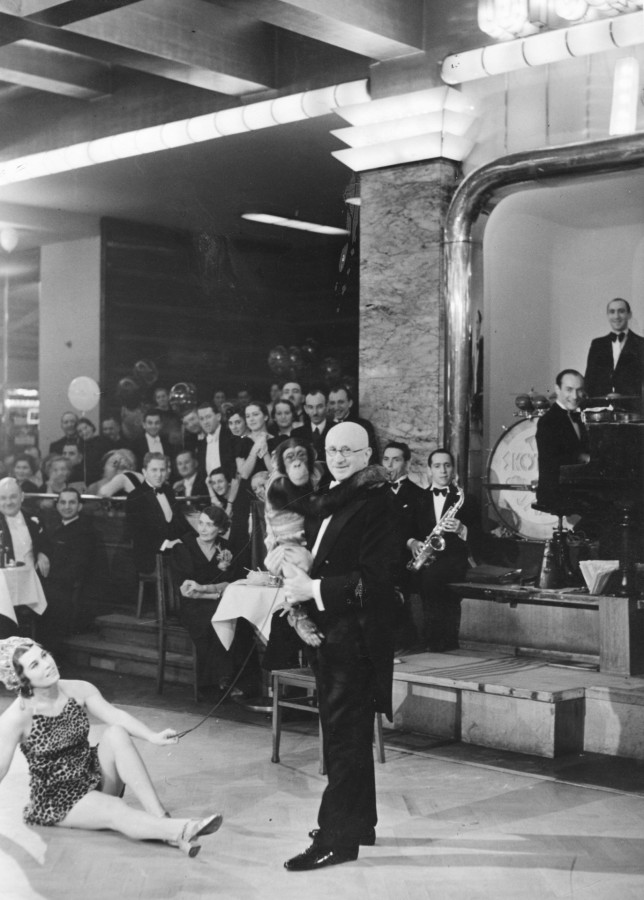
Franciszek Moszkowicz in Adria; photo: National Digital Archive
‘Lowlifes,’ ‘white slaves’ and ‘agents from Galicia’ seem to be a direct reference to the operations of Zwi Migdal, the Jewish mafia that supplied women from Central Europe to brothels in Argentina and Brazil (Jakubczak, 2020). It was a large-scale business (as most sex workers in the region came from our part of Europe, they were commonly referred to as ‘las Polacas’; from the perspective of Buenos Aires, the geographic, ethnic and religious differences in the women’s identities became irrelevant). Zwi Migdal was officially registered in 1906 as the Warsaw Mutual Aid Society Varsovia, ‘an organization of Jewish procurers, emigration agents and pimps posing as a self-help group for emigrants from Poland’ (Styczyńska). (The group was broken up in 1930, due primarily to the testimony of Raquel Liberman, a Jewish woman drom Berdichev.)
This story can be told through various songs of the era, as Donna J. Guy, author of Sex & Danger in Buenos Aires (Guy, 1991) does, using the poetry of tango lyrics as an important source of information about the social changes of the first decades of the 20th century in Argentina and their consequences. One of the texts chosen by her is Horacio Pettorossi’s tango Esclavas blancas (White Slaves).11
Below is an English translation by Paul Bottomer:
Little tortured souls, poor white slaves
Tango and milonga,
Infertile women, automatons of vice
Soulless and loveless.
I do not know why, tonight, your pupils reflect
The sorrow that is killing you,
And in every laugh, I know, poor milongaYour heart is sobbing.12
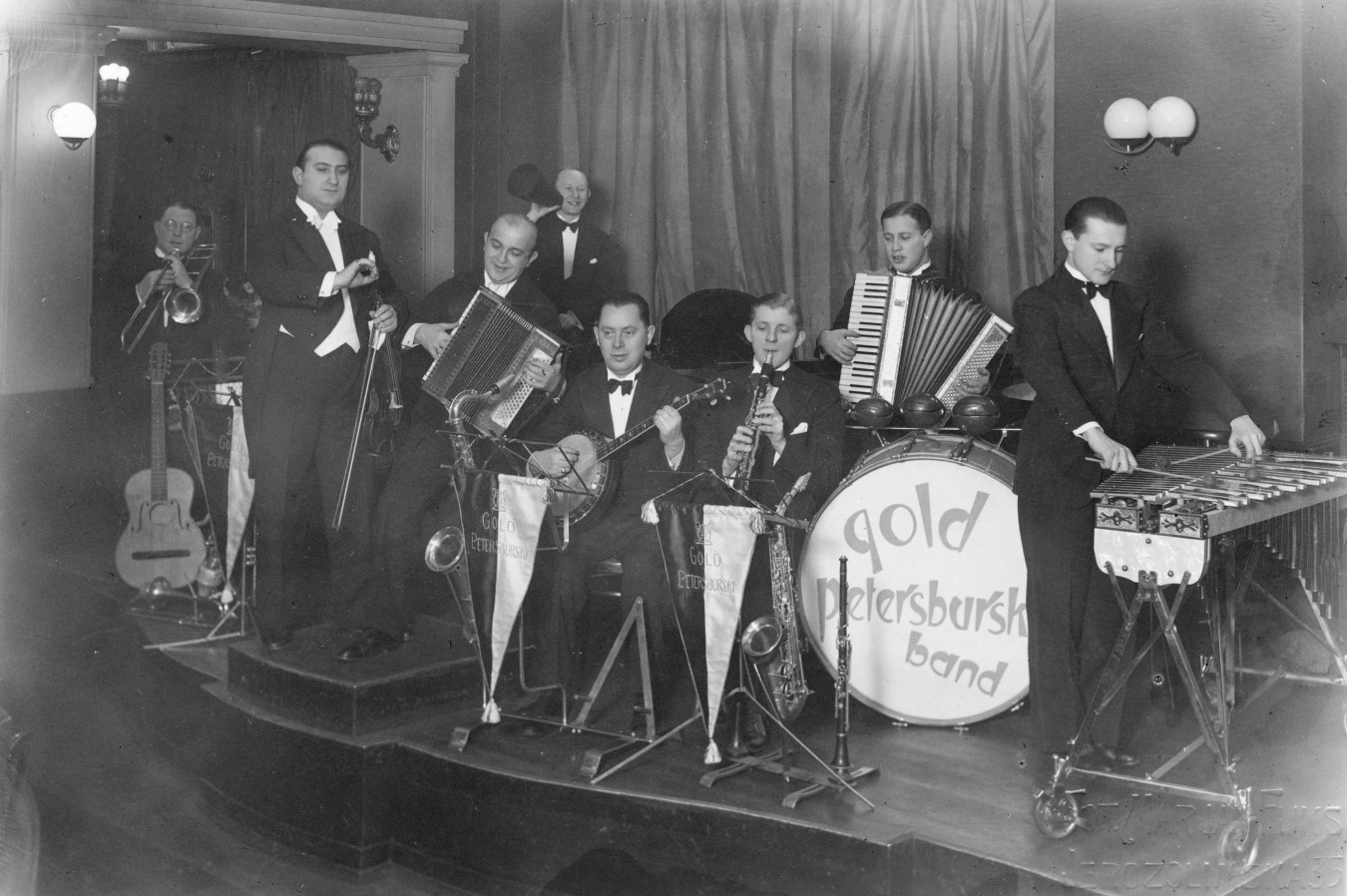
Jerzy Petersburski’s and Artur Gold’s dance orchestra; photo: National Digital Archive
Another victim of Zwi Migdal seems to be the protagonist of Andrzej Włast’s tango Wanda, with music by Jerzy Petersburski and Kazimierz Englard, from the 1928 revue To trzeba zobaczyć at the Morskie Oko Theatre:13
W szynkach Argentyny każdy zna ją
Bawi gości śpiewem, tańcem i grą
Kto zapłaci, temu odda swój czar
Ciała i ust żarZ Polski ją sprzedano tu na życie psie
Każdy nią pomiata, każdy śmieje się
Tylko jeden gitarzysta
Szepce do niej: święta, czystaWando
Kocham cię nad życie
Jedź ze mną w światWando
W tej spelunce podłej
Zwiędniesz, jak kwiatNie płacz, podaj usta malowane
Wierz mi, jam ci bliski, jam twój brat.(Wanda. Nowe tango argentyńskie, 1928)
The song’s author, Andrzej Włast, perhaps the most prolific lyricist of the interwar period, is also an important figure in the history of Polish tango. He managed major revues for which tangos were written and adapted, penning tens or even hundreds of them, including the lyrics to the Polish version of La Cumparsita.14
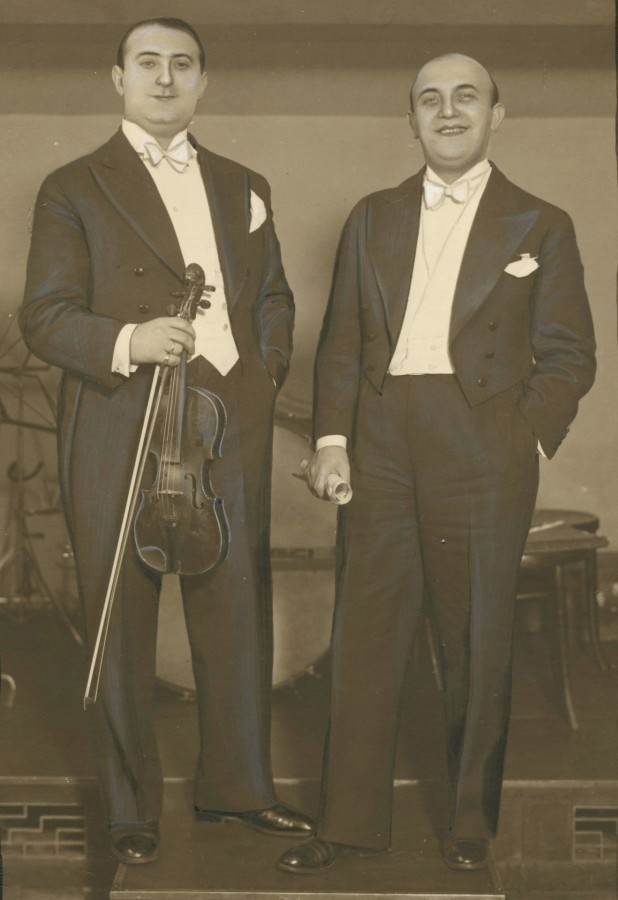
Artur Gold and Jerzy Petersburski; photo: National Digital Archive
But the echoes of women trafficking can also be found in Antoni Marczyński’s 1930 novel Szlakiem hańby (Marczyński, 1930) and its 1938 film adaptation Kobiety nad przepaścią directed by Michał Waszyński with music by Henryk Wars.15
The Golden Age of Polish tango began in the second half of the 1930s and lasted until the outbreak of the war. Tomasz Lerski, a historian of the Polish phonographic industry, claims that as many as 2,200 tango compositions were recorded in interwar Poland by Syrena Record alone (Lerski, 2004, p. 164). The recordings include Polish versions of Argentine and European tangos and original tangos composed by Polish musicians. The songs were written mostly for the stage, and later also for film. Those greatest hits, recorded by the brightest stars of Polish entertainment, were created for Qui Pro Quo and Morskie Oko revue theatres, but an interesting tango niche was the Jewish variety theatre with Dawid Bajgelman, who composed Grzech,16 Wiera Gran’s famous song, and was recently remembered on the Bester Quarter’s excellent record Bajgelman, Get to Tango.17 As in Argentina, tango developed in a triangle between the stage and film, the recording industry and the dance floor. Certain analogies can be drawn: Argentina’s most popular band of the Golden Age was Juan D’Arienzo’s orchestra, residing at the Chantecler club at 440 Paraná Street.18 The club’s proprietor and soul was Ángel Sánchez Carreño, known as El Principe Cubano. The Polish Chantecler would have been Adria, located at 10 Moniuszki Street, whose legendary boss, Franiszek Moszkowicz, could be dubbed Warsaw’s Principe Cubano. The counterpart to Juan D’Arienzo’s band must have been Jerzy Petersburski’s and Artur Gold’s orchestra, which had its best period before the opening of Adria in 1931; founded in 1925, the orchestra ended its activities at the turn of 1929, but occasionally reformed: for example, it performed at Adria during the carnival of 1935. The band also had a signature tune: the foxtrot Gdy Petersburski razem z Goldem gra (When Petersburski and Gold Play), with music by Artur Gold and lyrics by Andrzej Włast, from the 1926 Qui Pro Quo revue.19
When the war broke out, Jerzy Petersburski moved to the Soviet Union, joined the theatre of the II Corps and reached Palestine via Tehran and Jordan with Anders’ Army. In Iraq, he formed a trio with his cousins, Henryk Gold (Artur’s brother) and Fred Melodysta; in Cairo, he hosted radio broadcasts for soldiers; in Tel Aviv, he performed at the Ohel Theatre. After the war he found himself in Buenos Aires. He collaborated with the El Mundo radio station, ran a theatre with Kazimierz Krukowski, composed and made recordings. (The portal bibliotekapiosenki.pl claims that he worked with Astor Piazzolla, but so far I haven’t been able to confirm that.)20 According to various sources, Petersburski returned to Poland in 1968 or 1969, which, given the anti-Semitic campaign under way in Poland at the time, seems a surprising decision. As for Artur Gold, after the outbreak of the war, he found himself in the Warsaw Ghetto, where he managed an orchestra. He was then deported to Treblinka and formed an orchestra in the camp. He was murdered in 1943, in the last days of the camp’s existence.21

Tango scene in Four Horsemen of the Apocalypse; film still
4.
I will now put my research method to the test by examining one tango to see where it takes me. I will look at Eduardo Bianco’s Plegaria from 1927. The Polish part of its history is associated with the first performance of Chór Dana in the revue Gabinet figur wo(j)skowych at the Qui Pro Quo theatre in 1929.22
Władysław Daniłowski recalls that he had brought from Paris the ‘beautiful Spanish tango Plegaria.’
I asked them to write Polish lyrics. ‘No,’ was the collective reply. [The debuting choir’s audition for director Boczkowski was also attended by Qui Pro Quo lyricists Marian Hemar and Julian Tuwim – author’s note.] The Spanish words [sounded] not only beautiful but also authentic and stylish. Polish lyrics could ruin the effect. (quoted after Mościcki, 2008, p. 143).
The new group was a huge success and went on to play an important role in the history of Polish tango: tangos would be a staple of its repertory for years.23 The career of the first Polish revelers is associated with the rise of Mieczysław Fogg, one of the most important voices in the history of Polish tango.
But the first performance of Coro Argentino V. Dano (the group debuted under that name) is important for a number of reasons.
Mieczysław Fogg remembered it as follows:
The day of the premiere came. They dressed us in silk trousers and ruffled shirts, painted sideburns on our faces, adorned our heads with shiny sombreros and... the curtain was lifted... Our choir was given a Spanish name (to intrigue and lure Warsaw’s snobbish audience): Coro Argentino V. Dano.
We sang, in Spanish of course, the two lovely Argentine songs [Daniłowski, and after him, Tomasz Mościcki, author of a monograph on Qui Pro Quo, mention three – author’s note] against a backdrop depicting the Bay of Rio de Janeiro. (Could it be that geography was not a strong suit of the excellent decorator Józef Galewski?) (Fogg, 2009, p. 33).

Orquesta Bianco Banchicha
A photograph of Chór Dana from the National Digital Archive collection shows the singers in white ruffled shirts, but instead of sombreros, their heads are covered by black, probably silk bandannas, tied low on the nape of the neck in the Spanish fashion.24 Their eyes highlighted with kohl, the band’s members hold banjos (Fogg mentioned that he had to ‘give up buying new trousers and shoes’ to procure the instrument) and an accordion in their hands. The costumed singers are accompanied by Daniłowski in a tuxedo and bow tie. The contrast between the singers and the conductor further emphasizes the effect of colonial fantasy that the creators of Qui Pro Quo intended to evoke by means of Coro Argentino’s performance.
This effect was a combination of the novel formula of the performance, the previously unknown tango, the songs’ Spanish words, the ensemble’s foreign-sounding name and, finally, the exotic setting. The choice of Rio de Janeiro as scenery may seem odd from today’s perspective but is justified in the context of the interwar period: the Argentine scholar Florencia Garramuño discusses the early 20th-century dispute between Brazil and Argentina over the ownership of the tango (Garramuño, 2011). In Nowaczyński’s Apostle of the Tango, Oswald’s students demand that he dance tango ‘Brazilian style’ (that is, with fervour), and Tadeusz Artur Müller composed Tango brazylijskie (Brazilian Tango) with lyrics by Leopold Brodziński for the operetta Szczęśliwej podróży! at 8.30, a small musical theatre active in Warsaw in 1932-1934.25
In short, the first performance of Coro Argentino created a fantasy about the generalized South, where details (Spain? Argentina? Brazil?) were not so important. In this respect, Qui Pro Quo theatre drew extensively from fantasies which were widespread at the time, evoked by tango in popular culture across the world. Instrumental in the creation of these fantasies was the film Four Horsemen of the Apocalypse (1921, dir. Rex Ingram), with the famous tango of Rudolph Valentino and Beatrice Dominguez.26 Valentino’s performance in the gaucho costume, characteristic loose-fitting trousers, high boots and a black hat, popularized the figure of tanguero as a wild, passionate Argentine cowboy. This image was also referenced by Eduardo Bianco, composer of Plegaria and leader of Orquesta Tipica Bianco – Bachicha (Argentine orchestra who was very popular in prewar Europe and often performed wearing gaucho outfits).
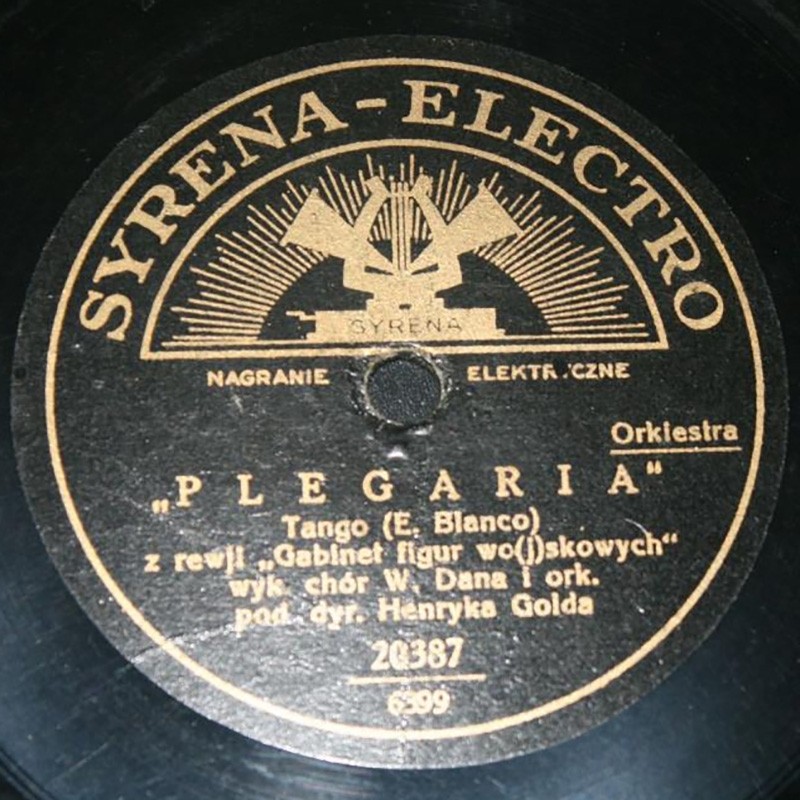
Plegaria – plate’s label, Syrena-Electro (20387), source: staremelodie.pl
According to Manuel Adet, an Argentine journalist who recounts its unobvious story, Eduardo Bianco’s Plegaria is ‘poor and conventional;’ the song uses obsolete literary devices as well as an anachronistic musical form; in Argentina, tango reached its maturity during that period (known as the Guardia Nueva), in terms of both music – thanks to the likes of Julio de Caro and Osvaldo Fresedo – and lyrics, thanks to such poets as Homero Manzi and Enrique Santos Discépolo (Adet, 2013). But Plegaria’s lyrical, sublime – not to say pathetic – tone must have found broad appeal in Europe, given the number of recorded versions.27 The text laments over the bitter pain of existence and speaks of the comfort offered by prayer. In the second verse, ‘the beautiful penitent’ dies and her ‘repentant soul’ passes away ‘without complaint.’ (Altar bells mentioned in the lyrics can be heard in a number of recordings.)
Chór Dana’s recording for Syrena Record sounds very much like the Odeon version of the Orchestra Bianco – Bachicha from 192728 (a vocal version that is probably closest in time to the choir’s). A similar arrangement and the same mournful key; the verses are sung by the soloist, joined by the choir in the refrain in both recordings. Bianco’s version features the guitar, characteristic of the early Argentine tango-canción, and the bandoneon; in the Polish version, the accompaniment is dominated by the accordion (unless it is a bandoneon, but it was a rare instrument in prewar Poland); there is also a violin solo. (What cannot be heard is the banjo, for which Fogg had saved up by not buying new shoes, so perhaps there was no banjo in the studio version.) In Bianco’s, the altar bells sound more like chruch bells. But the two versions are strikingly similar, particularly given the contrast between most Polish tangos of the era and the Argentine recordings. Bianco’s orchestra has a decidedly European sound.
This could be the beginning of a new story. One that is not about exotic aesthetics and colonial fantasies, but about politics and war.
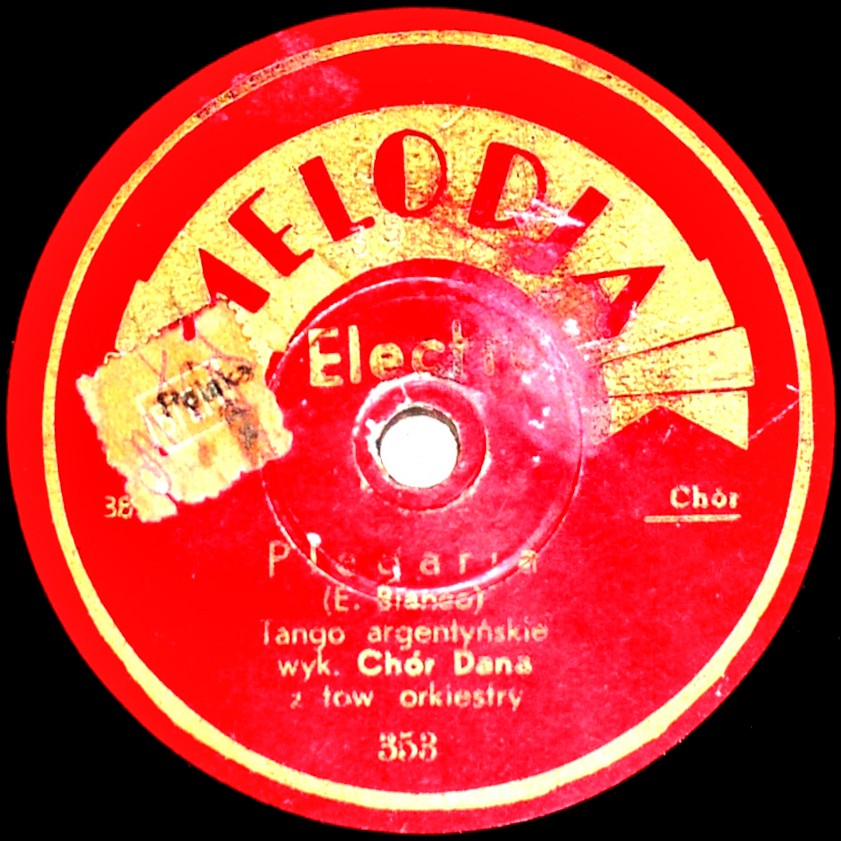
Plegaria – plate’s label, Melodia-Electro (20383), source: staremelodie.pl
Eduardo Bianco, an Argentine violinist born in Rosario, came to Europe in 1924, where he became an artistic and social success. Bianco seems to have enjoyed the company of the high and mighty of this world: he played for Alfonso XIII, king of Spain (to whom Plegaria is dedicated), Mussolini and Joseph Stalin. He was friends with Eduardo Labougle, Argentina’s ambassador to Berlin and fascist sympathizer; historical rumour has it that members of the Argentine diaspora in the 1930s warned each other against Bianco, who was regarded as a Gestapo agent (Adet, 2013).
Shortly before the war, Bianco’s orchestra attended an asado (i.e. Argentine barbecue) given by ambassador Labougle for the Führer and his entourage. The musicians played tango and served the guests. I have come across two versions of the story: in one, Bianco played Plegaria and Hitler liked the song so much that he asked for it to be replayed (Adet, 2013); the other claims that there is no proof of that (El tango de la muerte, 2010). It is known, however, that the Nazis saw tango as a wholesome alternative to the ‘degenerate,’ ‘black’ jazz.29
Plegaria would eventually make its way into the repertoire of concentration camp orchestras during the war. It was recorded as Das Todestango, with German lyrics, by Aleksander Kulisiewicz,30 a Polish political prisoner at Sachsenhausen, where he had memorized a vast archive of camp poems and songs in many languages, passed on to him by fellow inmates from all over Europe. He expanded this archive for many years and made the works available to the public, recording albums and giving concerts.
He dictated his memoirs to Konrad Strzelewicz:
Or in Lviv, on Janowska Street, at the so-called Janowska camp. ... There was an SS man there, SS-Unterscharführer Rokita, a café musician from Katowice. And there was a violin artist, Schatz, a Jew, who played marvellously. Now, this Schatz and other Jews wrote various compositions for Rokita, waltzes and tangos, he signed them and conducted concerts on Saturdays and Sundays to which the SS men’s wives and children came. They drank beer and wine and had a good time ... Rokita conducted the orchestra, The Tango of Death was played, and Mrs. Gebauer, an SS man’s wife, shot prisoners from a few steps away, just for pleasure…
The melody for The Tango of Death was composed before the war by the Spanish Jew Ricardo Bianco; it was taken from the tango Plegaria. And there in Lviv, as the prisoners were shot, the words of the song rang out:Can you hear the violin’s plaintive weeping
Its sounds fill the air, as if soaked in blood…
Have no fear, don’t be afraid of anything,
Although the violin plays the tango of death…(Strzelewicz, 1984, p. 39)
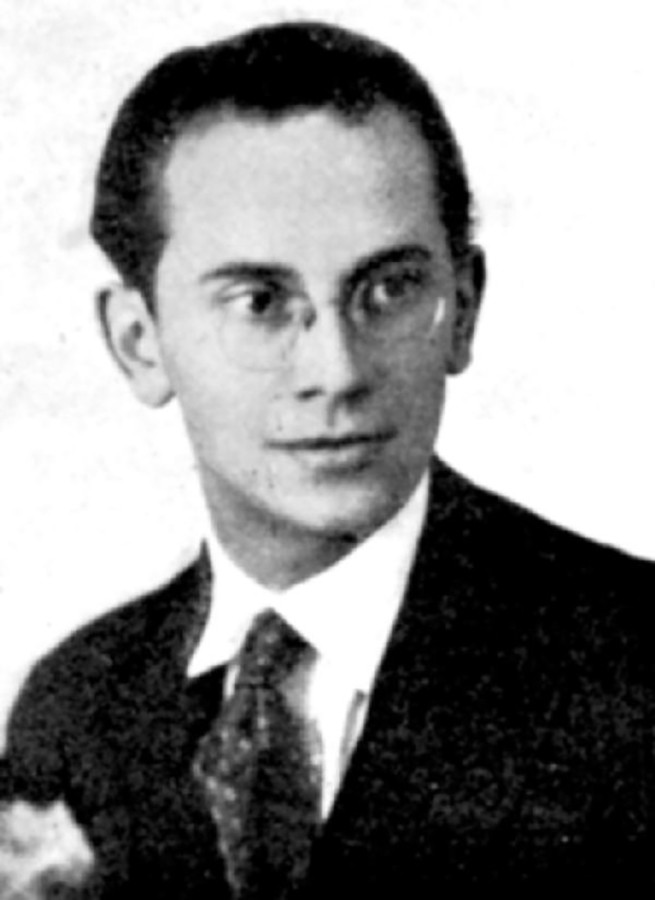
Emmanuel Schlechter
There is no doubt that Kulisiewicz means Eduardo Bianco’s Plegaria. The composer may have turned in his mind into a Jew by the association with the tradition of Sephardic music, which might serve as an interesting point.
One of many possible ones.
Tango blogs quote the suggestion of John Felstiner, biographer of Paul Celan, that the performances of Plegaria at the Janowska camp may have inspired Todesfuge (Deathfugue), Celan’s best-known poem and probably the most important poem about the Holocaust.31 In 1947 the Bucharest magazine Contemporanul published a Romanian translation under the title Tangoul Mortii. The American scholar argues that the poet draws on his personal experience of the practice of using music in Nazi camps: ‘Celan’s early title Todestango (Death Tango) gave his poem the ring of reliable evidence: that this person knew whereof he spoke, that he was surely there and must have written the poem there’ (Felstiner, 1995, p. 30).
We drink it at midday and morning we drink it at night
we drink and we drink
we shovel a grave in the air where we won’t lie too cramped
A man lives in the house he plays with vipers he writes
he writes when it grows dark to Deutschland your golden hair Margareta
he writes it and steps out of doors and the stars are all sparkling he whistles
his hounds to stay close
he whistles his Jews into rows has them shovel a grave in the ground
he commands us play up for the dance (Celan, 2001, p. 31).
The Dutch scholar Willem de Haan devoted an entire book, tellingly subtitled ‘the Creation of a Holocaust Legend,’ to the story of the ‘tango of death’ (de Haan, 2023). Relying on many accounts and comparing Kulisiewicz’s memories from Zapis with his immense collection at the Holocaust Museum, he asks the question whose tango was actually played by the Janowska camp orchestra. One of the hypothetical authors of the lyrics to the Janowska ‘tango of death’ mentioned by de Haan is Emmanuel Schlechter,32 another important name in the history of prewar Polish song. As for the music, the scholar puts forward three theories. The first version assumes that the tango was composed by an anonymous Jewish musician who was murdered in the camp along with all the other members of the orchestra. The second follows the legend of Plegaria, but de Haan rejects it as rumour based on Educardo Bianco’s fascist sympathies. In the third version, which he finds the most plausible, the tango played during executions in the Janowska camp was Jerzy Petersburski’s popular song (and the best-known Polish tango!) To ostatnia niedziela. Thus we would come full circle, returning to Adria and the orchestra of Petersburski and Gold (who, as we remember, formed the camp orchestra at Treblinka).
Another striking coincidence would give a different twist to this story. In May 1936 Eduardo Bianco’s orchestra recorded ten pieces, mostly tangos, including eight featuring the singers Manuel Bianco and Carlos Moreno for Syrena Record in Warsaw (Lerski, 2004). Some dozen Hebrew versions of popular Polish tangos were recorded by the same label for the Palestinian market in 1936-1939. The Hebrew lyrics were written by Izrael Mordechaj Biderman and Jehuda Warszawiak, and most of the songs were performed by Adam Aston, one of Poland’s most beautiful singing voices, who recorded them under the pseudonym Ben Lewi.33
Tomasz Jankowski i Katarzyna Zimek, authors of an excellent study of the collection, note that these tangos testify to the dilemmas of the era’s generation of Jews who were involved in the Zionist movement. Previously used only in religious music, the Hebrew becomes ‘the language of popular music which accompanied evening dancing and flirtatious advances of lovers.’ The very choice of the language ‘was an ideological declaration.’ According to scholars, the choice of the genre was not without significance either:
Shaping new mentality and building foundations of the dream homeland coincided with the very emergence of tango in the everyday experience of this generation. In these circumstances, two seemingly opposing phenomena merged in one: a ballroom dance and the Zionist message. However, there was also a sentimental note to the revolutionary Hebrew tangos, for when faced with the hardships of life in Palestine, the emigrants from Poland were able to think back towards their old homeland and lifestyle. Even in distant Tel Aviv, Ben Lewi sung with Adam Aston’s voice – a voice of the dance-filled Warsaw of the 1930s (Jankowski, Zimek, 2019, p. 139-140).
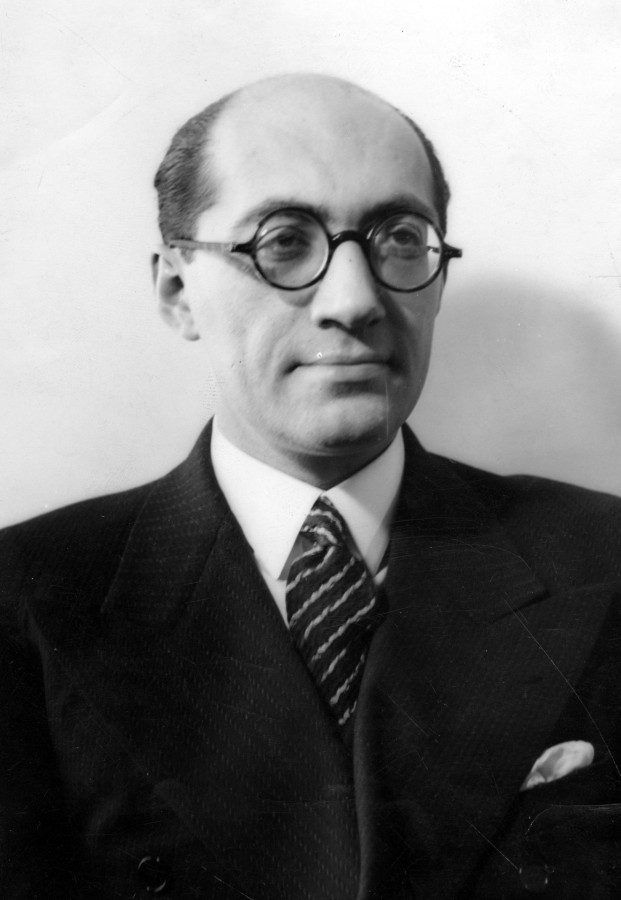
Andrzej Włast
5.
Eduardo Bianco returned to Argentina in 1943. The style of his orchestra (which, for the two decades of its European career, preserved the sound of the Guardia Nueva period) prevented him from finding a place in the Buenos Aires tango scene of the 1940s, where the orchestras of Anibal Troilo and Osvaldo Pugliese had elevated the tango form to a completely different level. Before leaving Europe in 1942, he recorded La Cumparsita in Amsterdam; many years later, Maurice Béjart, unaware of Bianco’s fascist sympathies, would use this version of the song in one of his performances (El tango de la muerte, 2010). Around that time, Andrzej Włast, the author of the Polish lyrics to La Cumparsita, died in the Warsaw Ghetto.
It is not known how and when he died. There are several mutually exclusive versions. Apparently Ola Obarska tried to get him out of the ghetto. Another story, mentioned by Loda Halama, claims that there was a chance to ransom Włast. According to a version that seems closer to the truth, he was rounded up for transport during the Great Action in 1942. He lived through the ‘loading’ at the Umschlagplatz and arrived at his ‘destination.’ Still another version takes him beyond the wall, where, on the Aryan side, he found shelter in the apartment of a showgirl, his former love. When he decided to leave his hiding place for a while, someone recognized him. Not as director Włast, but as Baumritter, a Jew. He didn’t get a chance to drink chicory coffee in the nearby cafe. His escape from denunciation was cut short by a shot from a Mauser (Wolański, 2019, pp. 8-9).
Bur before he died in unclear circumstances, he had written what may be his most beautiful song, Warszawo ma (My Warsaw).34
What follows from this juxtaposition of coincidences and the intersecting lives of a number of people – in Buenos Aires, Berlin, Warsaw, Lviv and Treblinka? From these tangled wanderings of melodies, rhythms, images and bodies of which I try to speak, drawing from seemingly random sources: remembered anecdotes, blog entries and descriptions of YouTube videos? The material is given some coherence and meaning by tango, which seems to work well as a memory machine. Tango allows a story to be composed from these scraps of information, rumour and conjecture. I have no doubt that it could not be put together without YouTube, which allows us to traverse thousands of kilometres and many decades and to discover or establish links between distant events at a single click, but also without the entire tango blogosphere or such sources as todotango.com and staremelodie.pl, the collective efforts of enthusiasts. These sources – non-linear, hypertextual, branching out in many directions – certainly influence the nature of my text and can sometimes lead me astray, but they also offer unexpected insights, generating meaning and setting imagination in motion.
This is also a very personal story. I tell it as a theatre scholar, interested in the missing pieces (and blind spots) in the narrative of theatre history (and awaiting the as-yet-unwritten history of Polish popular theatre). As a Varsovian, living about three hundred metres from the ghetto’s boundaries and some two hundred metres from Janusz Korczak’s Dom Sierot. And as a dancer of Argentine tango whose first tango school is located at 2A Wolność Street, twenty minutes on foot from the Jewish Cemetery, half an hour from the Umschlagplatz, five minutes from the Court Building on Leszno Street, ten minutes from the Femina Theatre and another fifteen from where the Sztuka café used to be – important centres of cultural life in the ghetto, where tango must have been played on many occasions.
Translated by Robert Gałązka
Niniejsza publikacja została sfinansowana ze środków Wydziału Polonistyki w ramach Programu Strategicznego Inicjatywa Doskonałości w Uniwersytecie Jagiellońskim.
This publication was financed by the Faculty of Polish Studies as part of Strategic Programme Excellence Initiative at Jagiellonian University.
A Polish-language version of the article was originally published in Didaskalia. Gazeta Teatralna 2023, no. 175/176, DOI: 10.34762/qjax-8k70.

